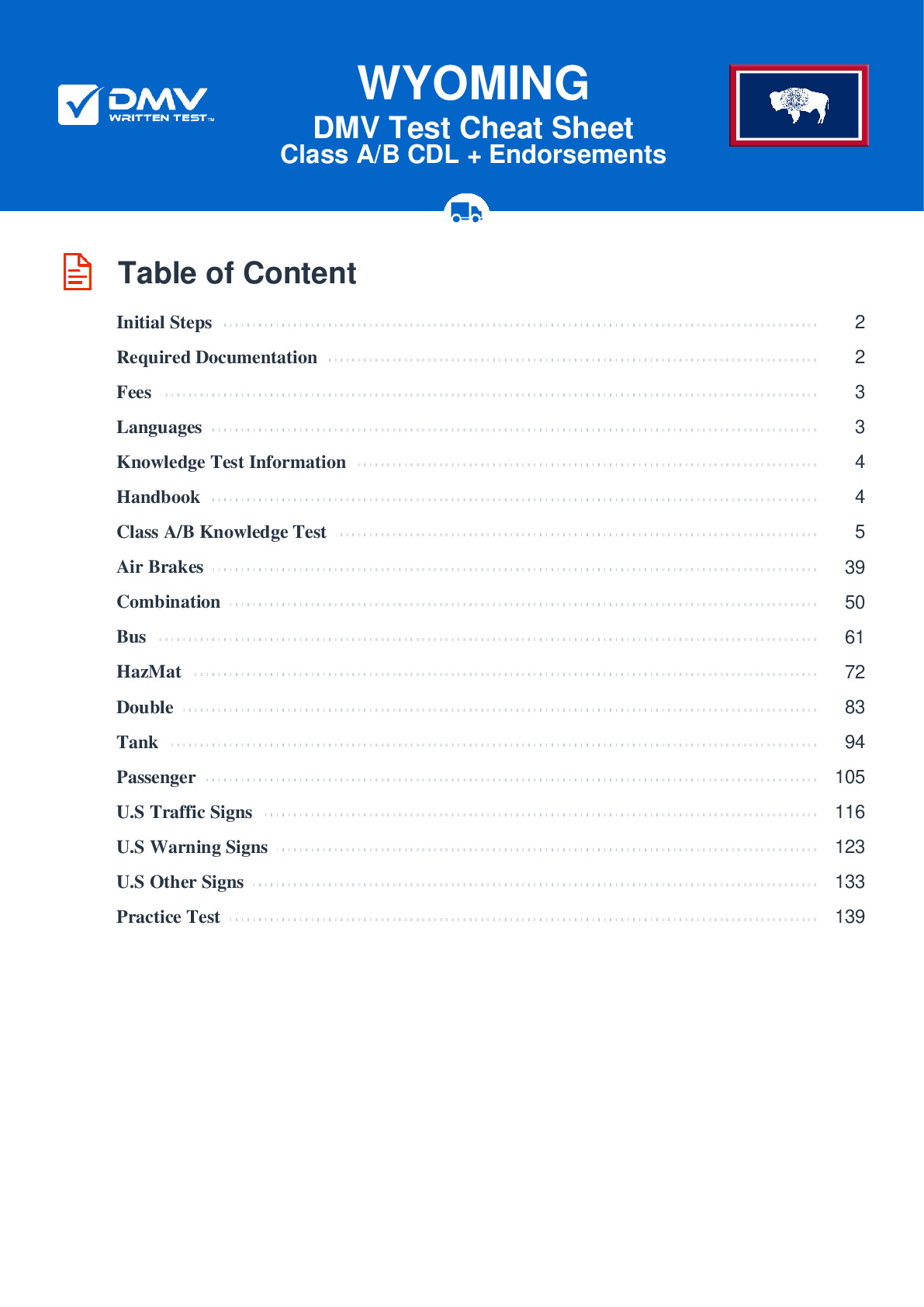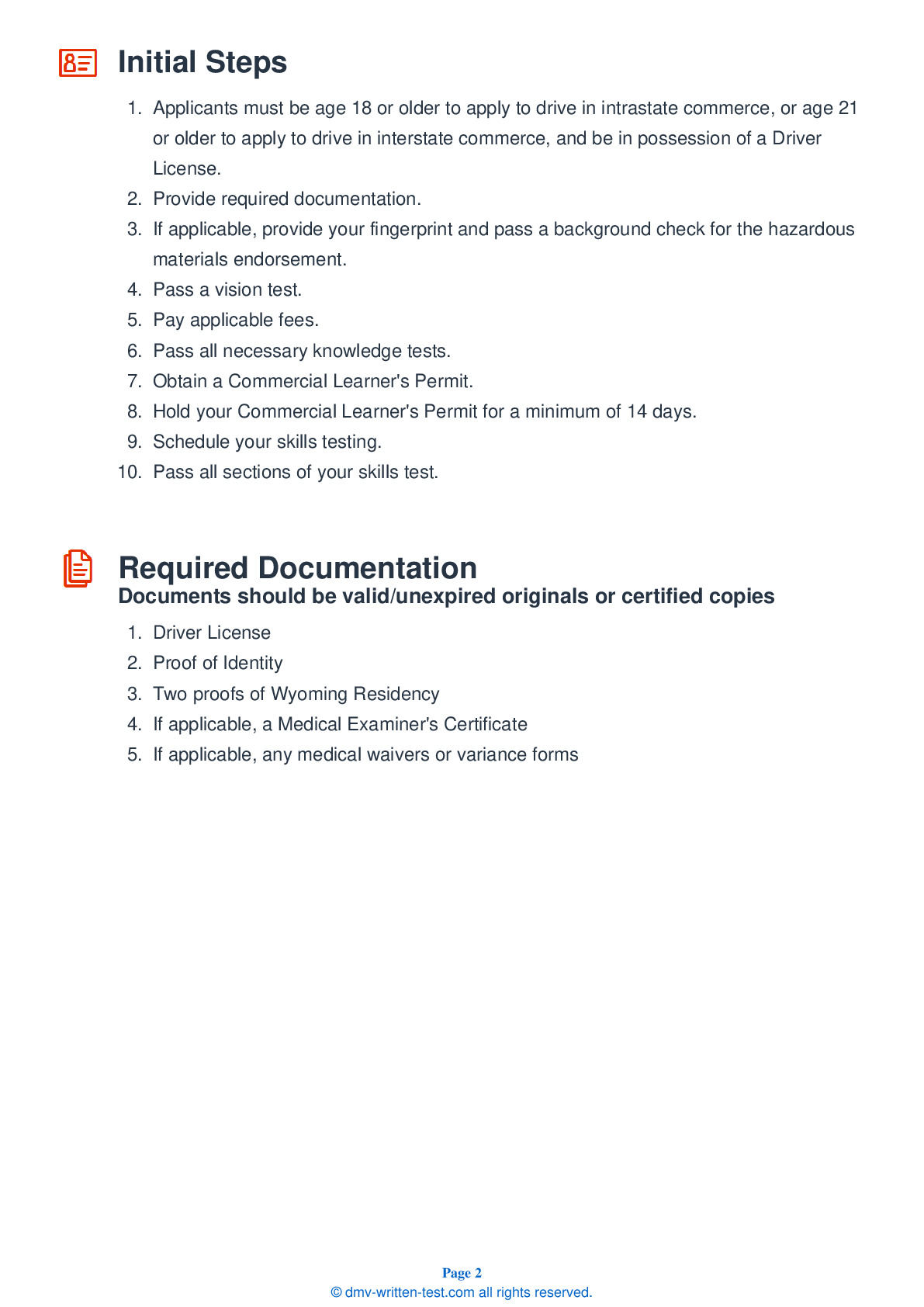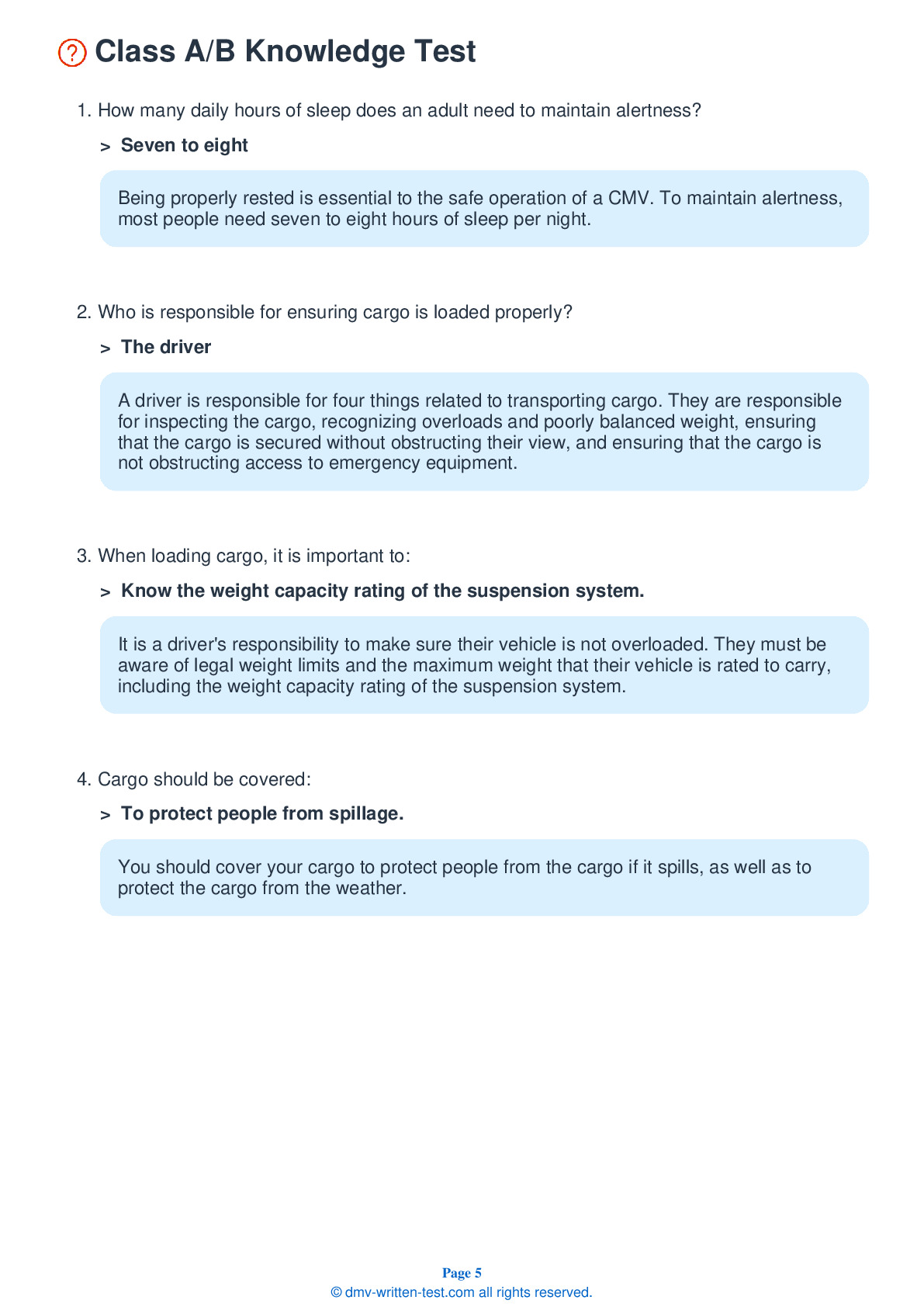Air Brakes
This endorsement is required for driving a vehicle with air brakes. To receive this endorsement, applicants must pass a written test. The test consists of 25 multiple choice questions. Each question has three or four answer choices. To pass, the applicant must answer at least 20 questions correctly. Test questions come from the Wyoming Driver License Manual for Commercial and Heavy Vehicles. Questions come from the chapter covering: Air Brakes. The Air Brakes endorsement may be used with the Class A, B or C CDL.
Number of Question
Passing Score
19. If using air tanks with manually operated drains, how often should you drain the tanks?
Explanation
In an air brake system with manually operated drains, the tanks should be drained at the end of each day of driving.
20. The leakage rate for a single vehicle with air brakes should be no more than ____ in one minute during a static leakage test.
Explanation
When performing a static leakage test on a single vehicle with air brakes, the leakage rate should be no more than 2 psi in a minute. If the air leaks from the air brake system at a quicker rate, the vehicle should not be driven because something likely needs to be repaired.
21. What is a wig wag?
Explanation
A wig wag is a type of low air pressure warning device in an air brake system. It drops a mechanical arm into the driver's view when the air pressure in the tanks falls below 60 psi.
22. When leaving your vehicle unattended:
Explanation
Always apply the parking brake when leaving your vehicle unattended.
23. To use the controlled braking method, you should:
Explanation
The method of controlled braking involves applying the brakes as hard as you can without locking the wheels. If you need to make large steering adjustments while using controlled braking, you should remove your foot from the brake pedal, steer, then reapply the brakes.
24. An alcohol evaporator is especially important:
Explanation
Some air brake systems contain an alcohol evaporator. This evaporator introduces alcohol into the system to help prevent ice from forming in cold weather.
25. In a vehicle with dual parking control valves, once air pressure is lost and the spring brakes come on:
Explanation




